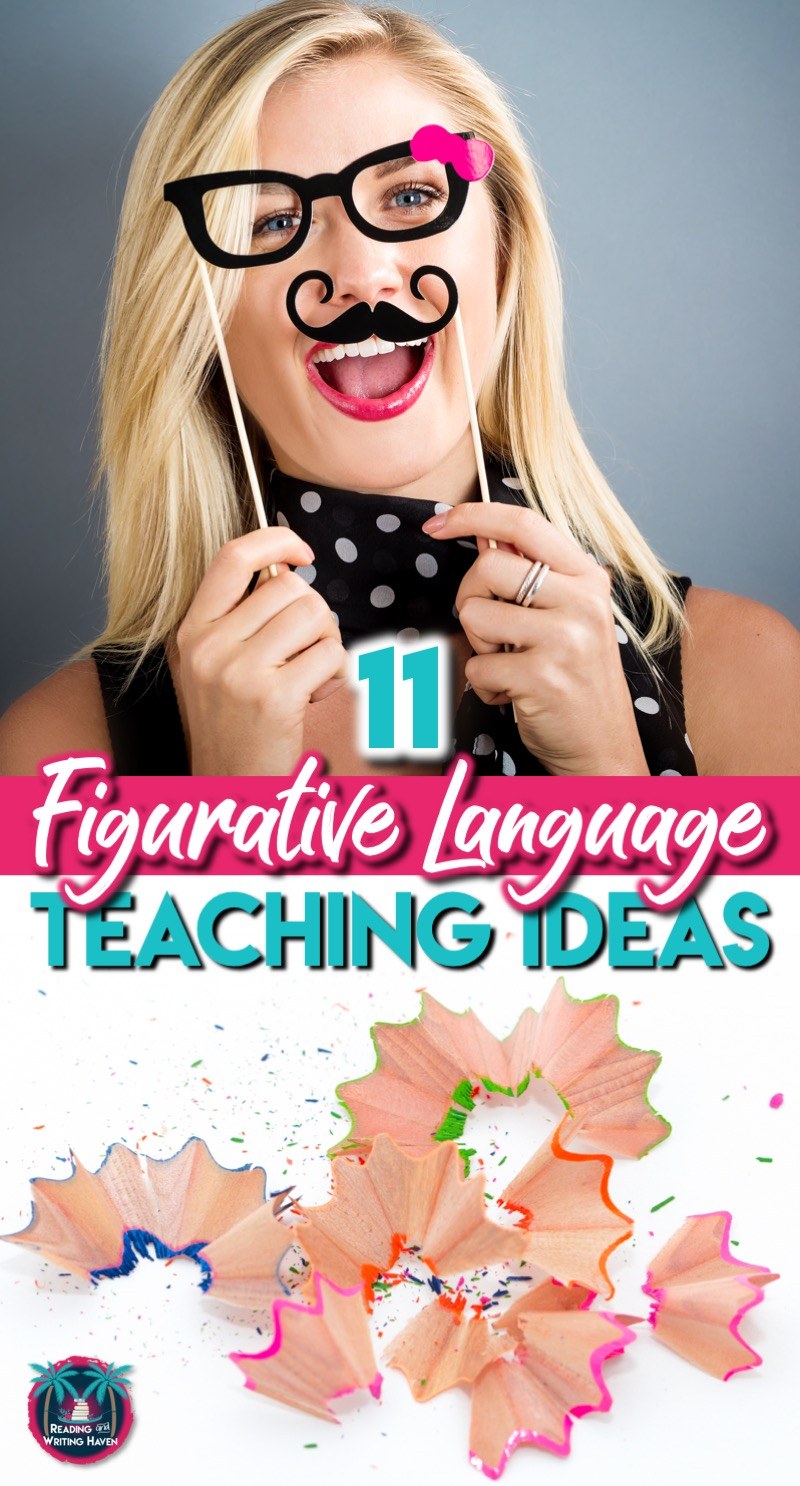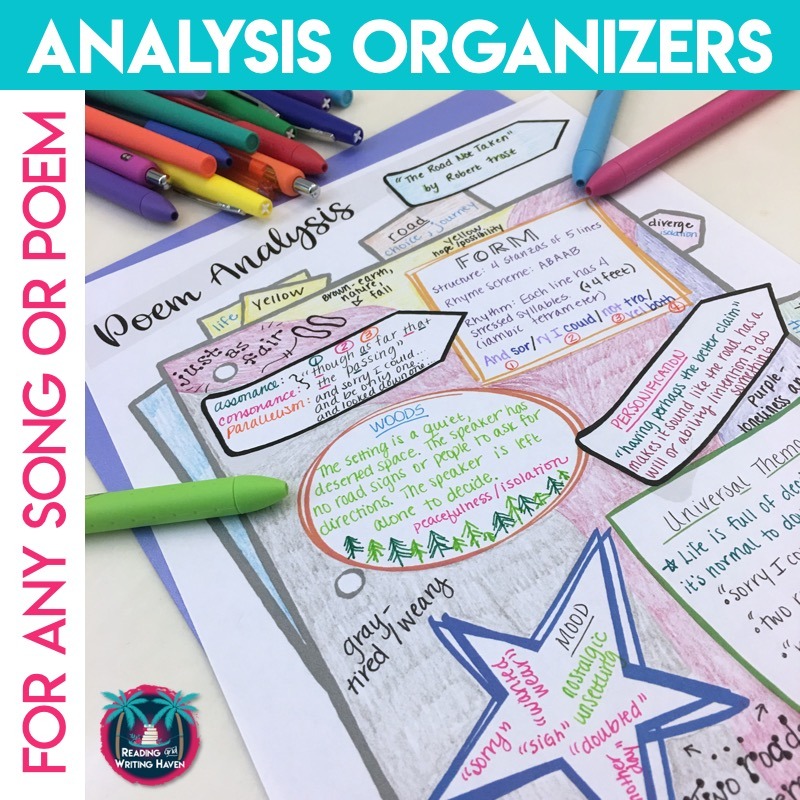11 Ideas for Teaching Figurative Language Meaningfully
Figurative language is easy to make one of the most engaging aspects of an ELA class. By nature, it is playful. Because it can be paired with pretty much any unit, it can be woven in throughout the year to ensure students get the repetition and practice they need. Here are some ideas for teaching figurative language in middle or high school.
When to Teach It:
Any time! Figurative language is fun to teach with almost any unit. When lesson planning, consider what type of figurative language is the most relevant to the text and the skills students need to develop.
With Poetry…
For example, build figurative language into your poetry units. Teaching poetry? Try to identify the technique the poet uses most frequently. Think, what literary device packs the most power? Then, as students practice literary analysis, make sure that figurative language is part of their response. This lesson will work with any poem of your choice.
With Shakespeare…
While most of my literature units only focus on a few literary devices, teaching figurative language with Shakespeare’s plays is different. They are so rich in a wide range of poetic devices that we spend more time studying how they reflect his craft.
Try beginning a Romeo and Juliet unit by introducing figurative language. Then, before finding examples from the play, ask students to look for them in a text that is more familiar, like The Lion King. With this scaffolding, students are more prepared to notice and analyze figurative language in the play.
With Short Stories…
Throw in a literary terms with each short story students read and analyze. Reading “The Gift of the Magi”? Study irony. While reading “The Lottery,” dig deep by analyzing the symbolism of the ritual, the people’s names, and the objects involved. Additionally, “The Scarlet Ibis” provides opportunities for discussion of many similes and metaphors.
With Novels…
Novels are the perfect opportunity to focus on more complex figurative language. They generally contain multiple examples of a device. For instance, To Kill a Mockingbird is full of allusions and idioms. What’s more, novels provide the chance to study figurative language that develops over the course of an entire work. Consider: Lord of the Flies and Animal Farm both are perfect for studying allegory.
With Creative Writing…
Don’t forget to build figurative language into writing units. It can be a powerful way to frame an essay, but even more so, students generally love learning to use literary devices in creative writing. In particular, this lesson has been enjoyable for students because it allows them to respond to high-interest nonfiction texts through figurative language, color, and abstract thinking.
 How to Hook Students:
How to Hook Students:
Sadly, even literary terms can be boring if all students do is identify examples and practice with worksheets. Try adding some divergent thinking and movement when teaching figurative language, like this.
Analyze figurative language in movies…
Students love seeing the application of what they are learning in popular culture. Youtube is full of videos that will engage students. Play one like this, and have a meaningful discussion about how the literary devices add to the viewers’ experiences.
Discuss figurative language in songs…
Students will find this clip and many others like it engaging. So, watch them dance in their seats and sing out loud as they reflect on how song writers embed figurative language in popular music. Ask students: What would this song be like without the similes? How does the power of this poem rest in its figurative language?
Write figurative language to complement art…
Art is visually appealing, which makes it an excellent writing hook. Try asking students to write a short response to a piece of artwork using a specific type of figurative language. For example, maybe they think Van Gogh’s brush strokes look like tufts on a blanket or scales on a lizard (similes). Or, perhaps they think their favorite surrealist’s work is just a little crazy (understatement). Alternatively, students responses could be a narrative to accompany the artwork instead of a commentary on the artist’s style.
Act it out…
Put students in pairs or small groups. Then, assign them one type of figurative language, and ask them to write a script that uses that device at least ten times. Students can record their skits and play them for the class or perform their skits live. The repetition generally makes these skits entertaining and memorable.
Watch Flocabulary clips…
Flocabulary has some high-interest figurative language clips students love. Here is one for similes and metaphors. They also have one for hyperboles and personification, and this one is for figurative language in general. Instead of just showing students the clip and moving on, have them write down examples or explanations from the clips that they haven’t thought of before.
Play games…
Games can bring energy and social learning benefits to the classroom. Figurative language lends itself well to game play, if your classroom culture calls for such. Try Figurative Language Truth or Dare for a basic level game. Want to add more terms and challenge advanced students? Play Get Schooled!
Teaching figurative language can and should be fun and memorable. Begin by hooking students, make sure to sprinkle it in frequently throughout the year, and add some divergent thinking to push students beyond simple identification.
Interested in reading more about figurative language? In this post, Language Arts Classroom writes about 10 poems and figurative language to teach with each.
READ NEXT:
-
USING PICTURE BOOKS AS MENTOR TEXTS
-
11 WAYS TO USE COLOR-CODING STRATEGIES IN THE CLASSROOM
-
SHORT STORY UNIT IDEAS
RELATED RESOURCE:
This scaffolded literary analysis activity works with any poem or song and helps students reflect on how figurative language impacts the text and the reader overall.


